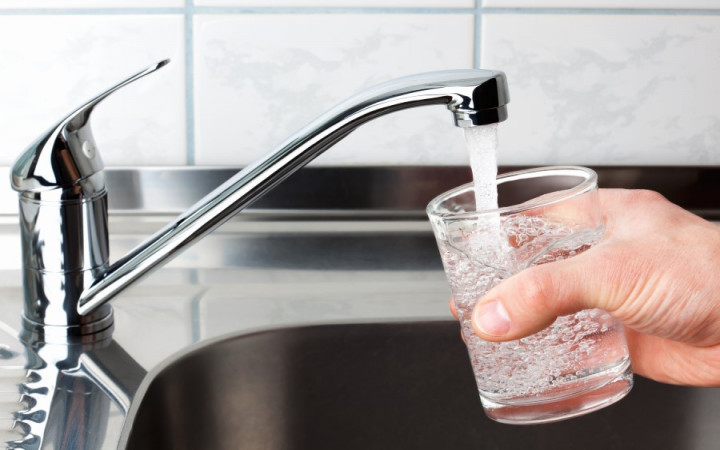Every time you turn on a faucet in your home, you trust that the water flowing out is clean and safe to drink. Behind the scenes, a complex journey of water treatment and testing ensures that your tap water meets stringent quality standards. In this article, we will follow the journey of water testing in municipal systems, from the source to your glass.

The Source: Water Collection
The journey begins at the water source, which can be a river, lake, groundwater, or reservoir. This water is collected and transported to a water treatment plant. The quality of the source water can vary significantly, making testing crucial to assess its suitability for consumption.
Stage 1: Coagulation and Flocculation
At the treatment plant, the water undergoes coagulation and flocculation processes. Chemicals are added to the water to bind impurities together into larger particles, forming “flocs.” During this stage, the water is tested to monitor the effectiveness of the treatment process and ensure that flocs are forming correctly.
Stage 2: Sedimentation
The water then moves to sedimentation basins, where the flocs settle at the bottom due to their increased weight. This stage allows for the removal of larger impurities. Water samples are routinely taken to check for sedimentation efficiency.
Stage 3: Filtration
Next, the water passes through filters, typically made of sand, gravel, and activated carbon. These filters further remove smaller particles and contaminants. Water samples are tested to verify the filtration’s effectiveness and detect any breakthrough of impurities.
Stage 4: Disinfection
To eliminate bacteria, viruses, and other harmful microorganisms, chlorine or other disinfectants are added to the water. This stage not only treats the water but also maintains its quality as it travels through the distribution system. Chlorine levels are regularly tested to ensure safe disinfection.
Stage 5: Distribution
The treated water is then distributed through an extensive network of pipes to homes and businesses. Along the distribution network, water quality is continuously monitored to detect any potential contamination or issues.
Faucet: The Final Frontier
Finally, the water reaches your home, ready to flow from your faucet. But the journey doesn’t end here. Water quality testing in municipal systems continues to safeguard your health:
- Reservoir and Source Monitoring: The source water quality is regularly tested to detect changes in contaminants, seasonal variations, or upstream pollution.
- Treatment Plant Testing: Daily testing of water quality ensures that the treatment processes are effectively removing impurities.
- Distribution System Monitoring: Samples are collected from various points in the distribution network to check for bacterial growth, chlorine levels, and overall water quality.
- Consumer Reports: Municipalities often provide annual water quality reports to residents, detailing the results of extensive testing and treatment processes.
Conclusion
The journey of water testing in municipal systems is a complex and meticulously managed process that guarantees the safety of the water you drink. From the source to your glass, rigorous testing and treatment ensure that tap water meets strict quality standards and is safe for consumption.
Next time you enjoy a glass of water from your faucet, you can appreciate the intricate journey it has taken to reach you, with every step carefully monitored to ensure your well-being.
Frequently Asked Questions
What contaminants are commonly tested for in municipal water systems?
Common tests include checks for bacteria, viruses, heavy metals (e.g., lead, arsenic), chlorine levels, pH, turbidity, and various chemicals.
How is water quality in municipal systems regulated?
Municipal water quality is regulated by local, state, and federal agencies, which set standards and regularly inspect and test water treatment and distribution systems.
Is municipal tap water always safe to drink?
Municipal tap water is generally safe to drink. However, water quality can vary by location, and occasional issues may arise, emphasizing the importance of continuous testing and monitoring.
How can consumers further ensure the safety of their tap water?
Consumers can install home water filters and regularly maintain their plumbing systems. Additionally, they can stay informed about local water quality reports and any alerts or advisories issued by their water provider.
What should I do if I notice a change in my tap water’s taste, odor, or color?
If you notice any unusual changes in your tap water, contact your local water provider. They can investigate and address any issues in the distribution system or source water.
Author Bio
Mr. Parthiv Kinariwala is a leading expert in calibration and testing services, with over 20 years of experience in the industry. As the founder of Prism Calibration, established in 2004, Mr. Kinariwala has been at the forefront of delivering precise and reliable calibration, testing, and validation solutions across various industries. His expertise in providing services that meet international calibration standards has earned the trust of major clients, including Reliance Industries, Zydus Cadila, Indian Oil, ONGC, Adani, and Tata.
With a deep understanding of instrumentation, measurement accuracy, and industrial testing, Mr. Kinariwala ensures that each client receives exceptional service tailored to their specific needs. His unwavering commitment to quality and precision has established Prism Calibration as a trusted partner for some of the largest and most respected organizations in the industry.







